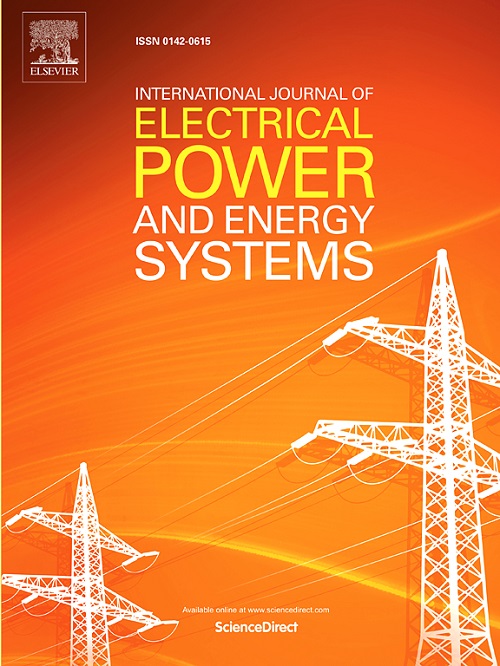通过线路包和移动压缩机两级增强电-气一体化系统弹性的方法
IF 5
2区 工程技术
Q1 ENGINEERING, ELECTRICAL & ELECTRONIC
International Journal of Electrical Power & Energy Systems
Pub Date : 2025-05-10
DOI:10.1016/j.ijepes.2025.110722
引用次数: 0
摘要
极端天气事件对电-气综合系统(IEGS)构成重大威胁,通常会导致关键部件的灾难性故障和随后的能源供应中断。本文提出了一种新的两阶段弹性增强方法,系统地协调配电系统和天然气系统的不同运行特性和互补弹性资源。在灾前阶段,对移动压缩机、线路包容量和PDS拓扑进行综合优化,以最大限度地提高系统的弹性恢复潜力。灾后阶段,考虑级联故障传播特性和管线包流动动力学,调度移动压缩机,灵活建立管线包/气井与隔离气网岛之间的输气链路,促进IEGS的恢复。利用二阶锥松弛将该方法转化为混合整数二阶锥规划模型。采用渐进式套期保值算法进一步提高求解效率。在具有33总线PDS和20节点NGS的IEGS上验证了该方法。结果表明,该方法为提高IEGS弹性提供了一个强大的解决方案,为极端天气事件下电-气系统的协调运行提供了显著的进步。本文章由计算机程序翻译,如有差异,请以英文原文为准。
Two-stage resilience enhancement method for integrated electricity-gas systems through linepack and mobile compressors
Extreme weather events pose significant threats to the Integrated Electricity-Gas Systems (IEGS), often resulting in catastrophic faults of critical components and subsequent disruptions in energy supply. This paper proposes a novel two-stage resilience enhancement method that systematically coordinates the distinct operational characteristics and complementary resilience resources of Power Distribution Systems (PDS) and Natural Gas Systems (NGS). In the pre-disaster stage, comprehensive optimization of mobile compressors, linepack capacity, and PDS topology is performed to maximize the potential for system resilience recovery. In the post-disaster stage, considering the cascading fault propagation characteristics and linepack flow dynamics, the mobile compressors are dispatched to flexibly establish gas transmission links between linepack /gas wells and isolated gas network islands, thereby facilitating the recovery of the IEGS. The proposed method is reformulated into a mixed-integer second-order cone programming model using second-order cone relaxation. The progressive hedging algorithm is employed to further improve the solution efficiency. The proposed method is validated on an IEGS with a 33-bus PDS and a 20-node NGS. Results show that the proposed method provides a robust solution for improving IEGS resilience, offering significant advancements in coordinated electricity-gas system operation during extreme weather events.
求助全文
通过发布文献求助,成功后即可免费获取论文全文。
去求助
来源期刊
CiteScore
12.10
自引率
17.30%
发文量
1022
审稿时长
51 days
期刊介绍:
The journal covers theoretical developments in electrical power and energy systems and their applications. The coverage embraces: generation and network planning; reliability; long and short term operation; expert systems; neural networks; object oriented systems; system control centres; database and information systems; stock and parameter estimation; system security and adequacy; network theory, modelling and computation; small and large system dynamics; dynamic model identification; on-line control including load and switching control; protection; distribution systems; energy economics; impact of non-conventional systems; and man-machine interfaces.
As well as original research papers, the journal publishes short contributions, book reviews and conference reports. All papers are peer-reviewed by at least two referees.

 求助内容:
求助内容: 应助结果提醒方式:
应助结果提醒方式:


